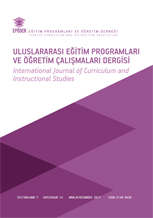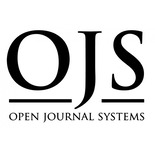Allegories of the present: curriculum development in a culture of narcissism and presentism
Abstract
Pinar recasts curriculum development and design from the sphere of the procedural – that is, principles and steps to follow regardless of the specificities of place and time – to ongoing forms of intellectual engagement with one’s distinctive situation, however complex and contested that situation is, however tragic one’s history, however conflicted the present might be. Such curriculum development requires a different set of concepts and practices from those many know take for granted, e.g. objectives to be implemented through curriculum design and teaching for the sake of assessment. Instead of objectives to be assessed, Pinar positions as primary the historical moment, situated as history is in national history and culture. In North America, this means includes articulating how the present becomes embodied in individual subjectivities, and how one might study both through academic knowledge in complicated conversation with those in classrooms.
Downloads
References
Block, A. A. (2009). Ethics and teaching: A religious perspective on revitalizing education. New York: Palgrave Macmillan.
Carey, J. W. (1992). Communication as culture: Essays on media and society. New York: Routledge.
Chun, W. H. K. (2006). Control and freedom: Power and paranoia in the age of fiber optics. Cambridge, MA: The MIT Press.
Grumet, M. R. (1978). Songs and situations. In George Willis (Ed.), Qualitative Evaluation (274–315), Berkeley, CA: McCutchan.
Jackson, P. (1992). “Conceptions of Curriculum and Curriculum Specialists.” In Handbook of Research on Curriculum, ed. Philip Jackson (3-40). New York: Macmillan.
Kracauer, S. (1995). The mass ornament: Weimar essays. [Translated, edited, and with an introduction by Thomas Y. Levin.] Cambridge, MA: Harvard University Press.
LaCapra, D. (2009). History and its limits: Human, animal, violence. Ithaca, NY: Cornell University Press.
Lasch, C. (1978). The culture of narcissism: American life in an age of diminishing expectations. New York: Norton.
Lasch, C. (1984). The minimal self: Psychic survival in troubled times. New York: Norton.
Lewin, T. (2010, July 21). States embrace core standards for the schools. Unusually fast action. U.S. offers yearly goals, and a deadline for a share of $3 billion. The New York Times CLIX (55,108), A1, A3.
Mosès, S. (2009 [1992]). The angel of history: Rosenzweig, Benjamin, Scholem. [Trans. by Barbara Harshav] Stanford, CA: Stanford University Press.
Pinar, W. F. (2008). Curriculum theory since 1950: Crisis, reconceptualization, internationalization. In F. Michael Connelly, Ming Fang He, and JoAnn Phillion (Eds.), The Sage Handbook of Curriculum and Instruction (491-513). Los Angeles: Sage.
Pinar, W. F. (2009). The worldliness of a cosmopolitan education: Passionate lives in public service. New York: Routledge.
Pinar, W. F. (Ed.) (2010). Curriculum studies in South Africa: Intellectual histories, present circumstances. New York: Palgrave Macmillan.
Pinar, W. F. (Ed.) (2011). Curriculum studies in Brazil: Intellectual histories, present circumstances. New York: Palgrave Macmillan.
Pinar, W. F. (2012a). What is curriculum theory? [Second edition.] New York: Routledge.
Pinar, W. F. (2012b). Curriculum studies in Mexico: Intellectual histories, present circumstances. New York:
Palgrave Macmillan.
Rauch, A. (2000). The hieroglyph of tradition: Freud, Benjamin, Gadamer, Novalis, Kant. Madison, NJ: Fairleigh Dickinson University Press.
Ravitch, D. (2010). The death and life of the great American school system: How testing and choice are undermining education. New York: Basic Books.
Roberts, D. D. (1995). Nothing but history: Reconstruction and extremity after metaphysics. Berkeley and Los Angeles: University of California Press.
Rumble, P. (1996). Allegories of contamination: Pier Paolo Pasolini’s Trilogy of Life. Toronto: University of Toronto Press.
Seixas, P. (Ed.) (2004). Theorizing historical consciousness. Toronto: University of Toronto Press.
Shapin, S. (2010). Never pure: Historical studies of science as if it was produced by people with bodies, situated in time, space, culture, and society, struggling for credibility and authority. Baltimore, MD: The Johns Hopkins University Press.
Silverman, K. (2000). World spectators. Stanford, CA: Stanford University Press.
Silverman, K. (2009). Flesh of my flesh. Stanford, CA: Stanford University Press.





